|
|
|
 |
|
A B C D E F G H I J K L M |
|
|
|
 |
|
|
| A |
| - Aperture |
| Aperture refers to the size of the opening in the lens that allows a predetermined amount of light to reach the film or sensor. The size of the aperture is controlled by an adjustable diaphragm of overlapping blades similar to the pupils of the human eye. The aperture of the lens is measured in “F-stops”; the lower the F-stop of a lens, the larger the aperture and the amount of light passing through it. The aperture can also affect exposure and depth of field. |
| |
|
| |
|
| |
| - AOI |
| AOI is means “Automated Optical Inspection”. AOI is an inspection tool, which uses cameras that optically scan a board, comparing the information with that of known good boards to detect errors in manufacture. Typically, these may be incorrect components, incorrectly placed components, missing components and dry joints. |
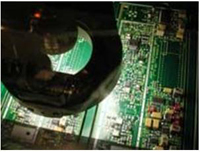 |
|
| |
|
| |
| - Area scan vs. Line scan |
| Based on different sensor types, the image acquired can also deviate in Area-scan and Line-scan imaging systems. The Line-scan imaging systems rely on motion to capture an area image, where as area-scan sensors use a far more simple stationary exposure method. |
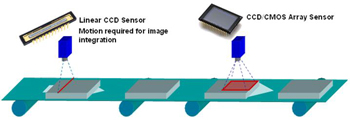 |
|
| |
|
| |
| - Aspect Ratio |
| The term Aspect Ratio refers to the width of a picture (or screen) in relation to its height. Ratios are expressed in the form "width x height". Normally the standard computer and television aspect ratio is 4 x 3, and DVD/HDTV is 16 x 9. |
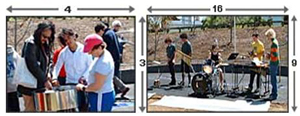 |
|
| |
|
|
|
|
|
|
|
 |
|
|
|
|
|
| B |
| - Barrel Distortion |
| Barrel distortion is a lens effect, which causes images to become “spherical” or "inflated". Barrel distortion is associated with wide-angle lenses, and typically occurs in the wide end of a zoom lens. The use of converters often amplifies the effect,making the image severely distorted. Barrek distortion is most visible in images with non-perfectly straight lines, especially when they are close to the edge of the image frame. |
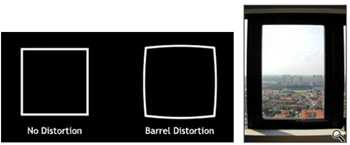 |
| |
|
| |
| - Bayer Mask CCD |
| Consumer CCD cameras obtain color information by sampling the image through a Bayer filter mask. The classic mask is RGB in a mosaic format, with half the cells sampling green and a quarter each on red and blue. There are twice as many green filters as the other colors because the human eye is more sensitive to green and therefore green color accuracy is more important. |
|
| |
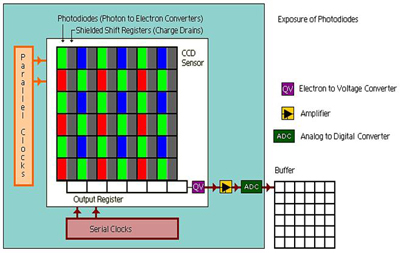 |
| |
|
| |
| |
| - Binary Thresholding |
| Binary Thresholding is the classification of all pixels of an image into black or white based on a gray level limit. |
 |
|
| |
|
 |
| - Bit Depth |
| The number of bits used to code a value (such as a pixel component) into an integer value. This is directly related to the number of levels that the value might have, such as 256 with an 8-bit depth or 1,024 with a 10-bit depth. |
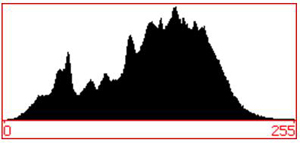 |
|
| |
|
| |
| |
| - Blooming |
| Under conditions where a CCD is exposed to very high intensity illumination, it is possible to exhaust the storage capacity of the CCD wells, and a condition known as blooming occurs. When this occurs, excess charge will overflow into adjacent CCD photodiode wells, resulting in a corrupted image near the blooming site. Some CCD sensors have built-in Anti-Blooming Gate design for prevent this kind problem. |
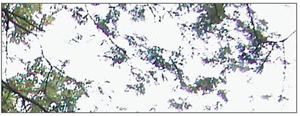 |
|
| |
|
| |
| |
| - Blur effect |
| Motion blur is an effect you will see in photographs of scenes where objects are moving. It is mostly noticeable when the exposure is long, or if objects in the scene are moving rapidly. A camera works by exposing a sheet of light sensitive film to a scene, for a short period of time. The light from the scene, hitting the film, causes the film to change chemically, and eventually results in a picture representation of the scene. This is known as an exposure. If the scene changes during that exposure, a blurred image will result. |
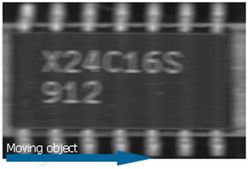 |
|
| |
|
|
|
|
|
|
|
|
|
|
 |
|
|
|
|
|
| C |
| - 3CCD Camera |
| 3CCD cameras have three separate charge-coupled devices, each one separately measuring red, green, and blue light. Light coming into the lens is split by a dichroic prism, which directs the appropriate wavelengths of light to its respective CCD. |
| |
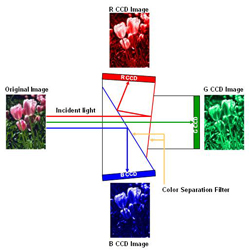 |
| |
|
| |
| - 4CIF/CIF/QCIF |
| 4CIF (4 times Common Interface Format) - A display standard for video conferencing over the Internet. 4CIF uses 704 x 576 pixels resolution, roughly four times the area of CIF (Common Intermediate Format; 352 x 288 pixels). CIF (Common Interface Format or Common Image Format) - The Common Interface Format was developed to support video conferencing and has an active resolution of 352 x 288 and a refresh rate of 29.97 frames per second. QCIF (Quarter Common source Intermediate Format) - Active resolution of 176 x 144 pixels per frame. |
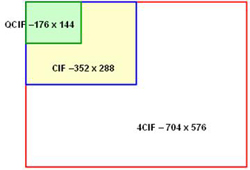 |
|
| |
|
| |
| - Camera Link |
| Camera Link is a new high-speed serial data interface standard developed by a consortium of camera and frame grabber companies. PULNiX America, Inc., as chair of this ad hoc Camera Link committee, has applied for U.S. trademark. Camera Link, based on National Semiconductor’s Channel Link technology, provides a universal, high-speed, serial cable interconnection standard for both digital cameras and image acquisition boards. Camera Link offer three configurations – Base configuration, Medium configuration and Full configuration and the data transmission rates up to 2.38 Gbps. |
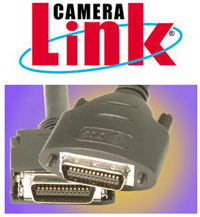 |
|
| |
|
 |
| - CCD vs. CMOS |
| CCD (Charge Coupled Device) – ACCD sensor is based around silicon chipsets with receptors (photosites) to collect light. The light is turned into electrical charges, and read out to a computer where an image is displayed. |
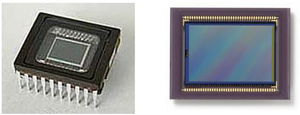 |
| |
| CMOS (Complementary Metal - Oxide Semiconductor) - CMOS is a widely used type of semiconductor. CMOS semiconductors use both NMOS (negative polarity) and PMOS (positive polarity) circuits. Since only one of the circuit types is on at any given time, CMOS chips require less power than chips using just one type of transistor. CMOS traditionally consumes little power and can be fabricated on just about any standard silicon production line, so they tend to be extremely inexpensive compared to CCD sensors. |
| |
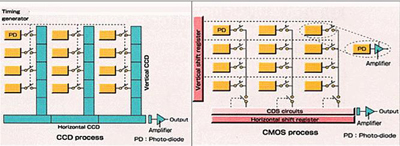 |
|
| |
|
| |
| - CCIR |
| CCIR (International Radio Consultative Committee), was a global organization responsible for establishing monochrome television standards for European 625 lines standard for video signals. CCIR 601 was the standard for transmitting Digital Video Component information that is recorded by the D1 machine. The CCIR has now become the ITU (International Telecommunication Union). |
|
| |
|
| |
| - Centroid |
| A centroid is the center of gravity of a shape. For Machine Vision this is a two dimensional measurement. It is typically calculated on binary (single bit depth) images. In the binary case is the average location in X and in Y of all black pixels. It is a floating-point result and is one of the results gained from the more general calculation of moments of inertia. |
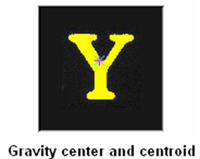 |
|
| |
|
| |
| - Close-up Lens |
| The “Close-up Lens” is an attachment lens that fits on the front of a camera lens, allowing photography at closer distances than normal for that lens. The Close-up Lens cannot work with the camera individually. |
 |
|
|
|
 |
| - C-Mount/CS-Mount/F-Mount |
| C-Mount, CS-Mount and F-Mount denote typical styles of Lens adaptors. The F-Mount lenses have a flange focal length of 46.5mm and are typically used in high-resolution industrial cameras. C-Mount and CS-mount lenses are typically used in CCTV or industrial cameras. The only difference is C-Mount and CS-Mount lenses, are focal length (17.526 mm C/12.5 mm CS). |
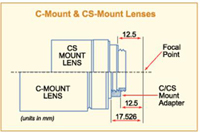 |
|
| |
|
| |
| - Color Temperature |
| Most light sources are not 100% pure white; but instead have a certain "color temperature", expressed in Kelvino. For instance, the midday sunlight will be much closer to white than the more yellow early morning or late afternoon sunlight. The chromaticity diagram gives rough averages of some typical light sources. Other examples include: candle light color temperature around 1500 °K, Incandescent light around 3000 °K, midday sunlight around 5600 °K, and blue sky around 9000 °K. |
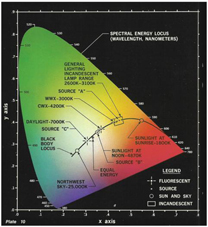 |
|
| |
|
| |
| - Comb effect |
| When using an interlaced-scan CCD camera to capture “on-the-fly” images, sometimes the interlacing will become fragmented, resulting in an image that looks to be “combed” over. Progressive scan cameras typically provide protection from this issue. |
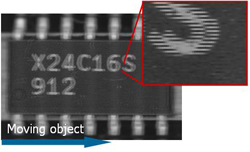 |
|
| |
|
| |
| - Composite Video |
| Composite video is encoded and mixed with color information (C, Chrominance) and luminance information (Y). Luminance and chrominance are combined along with the timing reference ("sync") information, using one of the coding standards - NTSC, PAL or SECAM - to make composite video. Typically, a composite video connection, is made via a coaxial connection. |
 |
|
| |
|
|
|
|
|
|
|
 |
|
|
|
|
|
| D |
| - Depth of Field |
| When an object is focused, it can be observed that an area in front of and behind the object is also in focus. The range of focus is called "depth of field". Depth of field increases when: the focal length is shorter; the aperture (F-stop) is higher, or the object distance is greater. Refer the figure above; with the f-stop of f/2.4, only the first card seems to be in focus. With an f-stop of f/8, all three pictures retain a fair amount of sharpness. |
| |
 |
| |
|
| |
| - Dot Grid Pattern |
| The “Dot Grid Pattern” is a calibration tool, used to ensure that the exact ratio of: object physical resolution, rotation, tilt, and acquired camera image. For example – one physical dot diameter is 1 mm and dot image diameter of camera is 2 pixels; therefore, image accuracy is 1 pixel = 0.5 mm and resolution ratio is 1 : 2. |
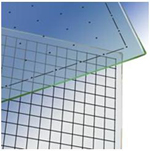 |
|
| |
|
| |
| - Dynamic Range |
| The dynamic range of a sensor is defined by the largest possible signal divided by the smallest possible signal it can generate. The largest possible signal is directly proportional to the full well capacity of the pixel. The lowest signal is the noise level when the sensor is not exposed to any light, also called the "noise floor". Cameras with a substantially large dynamic range are able to capture shadow detail and highlight detail at the same time. |
|
| |
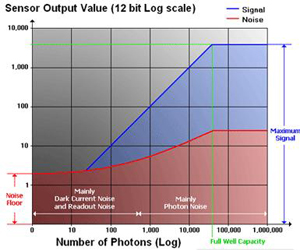 |
| |
|
|
|
|
|
|
|
 |
|
|
|
|
|
| E |
| - EIA (RS-170A) |
| EIA (Electronics Industry Association) is the standards body that originally defined the 525 line 30 frame per second television standard. The EIA standard, also defined under US standard RS-170A, defines only the monochrome picture component but is mainly used with the NTSC color-encoding standard. |
| |
|
| |
| - Exposure |
| The exposure is the amount of light received by the film or sensor and is determined by how wide you open the lens diaphragm (aperture) and by how long you keep the film or sensor exposed (shutter speed). The effect an exposure has depends on the sensitivity of the film or sensor. |
 |
|
| |
|
| |
| - External Trigger |
| The external trigger is a signal from external device/equipment typically a TTL (Transistor-Transistor Logic) signal which is transmitted in order to synchronize two or more instruments; acting similar to a mechanical initiator in setting up a process or reaction. |
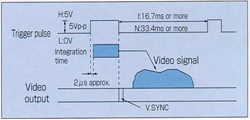 |
|
| |
|
|
|
|
|
|
|
 |
|
|
|
|
|
| F |
| - Fish-eye Lens |
| The fish-eye lens is extreme wide-angle lens with an angle of view exceeding 100o, and sometimes in excess of 180o. Depth of field is practically infinite, and focusing is not required. These lenses are good for artistic images, due to their distortion of the edges of the frame. |
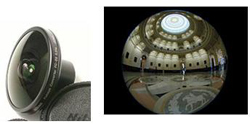 |
| |
|
| |
| - Focal Length |
| The focal length of a lens is defined as the distance in mm from the optical center of the lens to the focal point, which is located on the sensor or film if the image that is "in focus". |
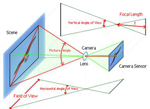 |
|
| |
|
| |
| - FOV |
The field of view is the relationship between the CCD/CMOS sensor angle of view and the distance of the object from the optical lens. The field of view varies with the focal length of the lens, and can be calculated via the following formula :
Field of view (FOV) = [pixel cell size] x [number of pixels] x [working distance] / [focal length] |
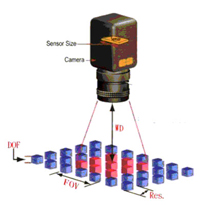 |
|
| |
|
|
|
|
|
|
|
 |
|
|
|
|
|
| G |
| - Gage Blocks |
| Gage blocks are mass produced physical markers, which combine arithmetically to form usable length combinations. Gage blocks use standards that re-traceable to the national bureau of standards in their country of use. |
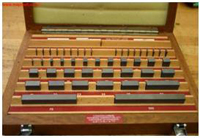 |
| |
|
| |
| - Gain |
| Gain is the level of amplification of a signal. The Gain affects image sharpness sensed by the naked eye. When gain is increased in an image, one must also take into consideration the addition of significant “noise”. |
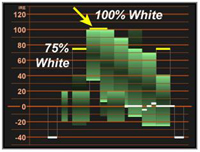 |
|
| |
|
| |
| - Gamma |
| The light output of a CRT is not linear with respect to the voltage input. This non-linearity follows an exponential function that is known as gamma correction. The camera has the inverse gamma of the CRT so that the resulting stage light input to CRT light output transfer will be linear; given the restrictions of the video system. |
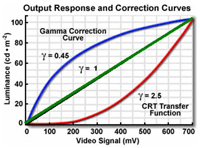 |
|
| |
|
|
|
|
|
|
|
 |
|
|
|
|
|
| H |
| - Hue |
| Hue (Hue or Tint Control). For digital image processing, the Hue refers to the wavelength of the color, seen by the camera. Hue is the parameter of color that allows us to distinguish between colors |
 |
| |
|
| |
| - Histogram Plot |
| A histogram is the count of pixels according to intensity level. The quantity of pixels of each intensity level from black to white is made and put into a list. This list is typically plotted as a bar graph with low intensity horizontal axis and a logarithm of counts on the vertical axis. Histogram plots are used to evaluate exposure level and contrast of an image. |
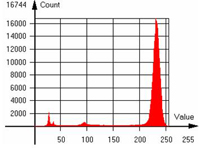 |
|
| |
|
|
|
|
|
|
|
 |
|
|
|
|
|
| I |
| - IEEE 1394/Firewire/iLink |
| The 1394 digital link standard was conceived in 1986 by technologists at Apple Computer, who chose the trademark 'FireWire', in reference to its speeds of operation. In 1995, the IEEE (Institute of Electrical and Electronic Engineers) defined this standard is IEEE 1394. There are two IEEE 1394 standards in current market; 1394a for data transmission rates up to 400 Mbps, and the other is IEEE 1394b; for data transmission rates up to 800 Mbps. |
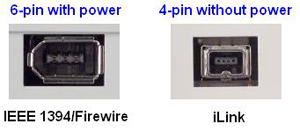 |
| |
|
| |
| - Interlaced-scan |
| A system of video scanning whereby the odd- and even-numbered lines of a picture are transmitted consecutively as two separate interleaved fields; first the odd field which is made of odd numbered lines (1, 3, 5) then the even field which is made of the even numbered lines (2, 4, 6). This method is provides a superior visual impression, when used with low refreshing rates such as the ones used by standard television systems (50/60 Hz). |
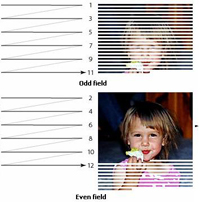 |
|
| |
|
| |
| - IR-Cut Filter |
| Infrared (IR) cut-off filters are used with color CCD or CMOS imagers to produce color images. An IR cut filter blocks the transmission of the infrared while passing the visible. Typically, the IR cut filter for not only filtering Infrared but filtering UV light also, so its call “UV-IR Cut Filter” too. Normally the camera will add IR cut filter in the front of CCD or CMOS sensor. The purposes to add IR cut filter is want ensure camera can exposure visible light of scenes to reduce the influence from invisible light. |
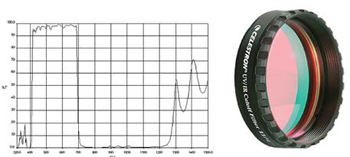 |
|
| |
|
|
|
|
|
|
|
 |
|
|
|
|
|
| J |
| - Jitter |
| The deviations in a clock’s output transitions from their ideal positions define the clock’s jitter. The deviations can either lead or lag the ideal position, and may cause “ghost image” problem. |
 |
|
| |
|
|
|
|
|
|
|
|
|
|
|
|
|
| L |
| - Lux |
| A unit of illumination equal to the direct illumination on a surface; equal to one lumen per square meter. |
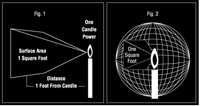 |
|
| |
|
|
|
|
|
|
|
|
|
|
|
|
|
| M |
| - Macro Lens |
| The "macro" means the optical ability to produce a 1 : 1 or higher magnification of an object on the film or sensor. |
 |
| |
|
| |
| - MTF |
| MTF (Modulation Transfer Function) - MTF is the spatial frequency response of an imaging system or a component; it is the contrast at a given spatial frequency relative to low frequencies. Spatial frequency is typically measured in cycles or line pairs per millimeter (lp/mm). High spatial frequencies correspond to fine image detail; the more extended the response, the finer the detail - the sharper the image. |
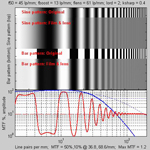 |
|
| |
|
|
|
|
|
|
|
 |
|
|
|
|
|
|